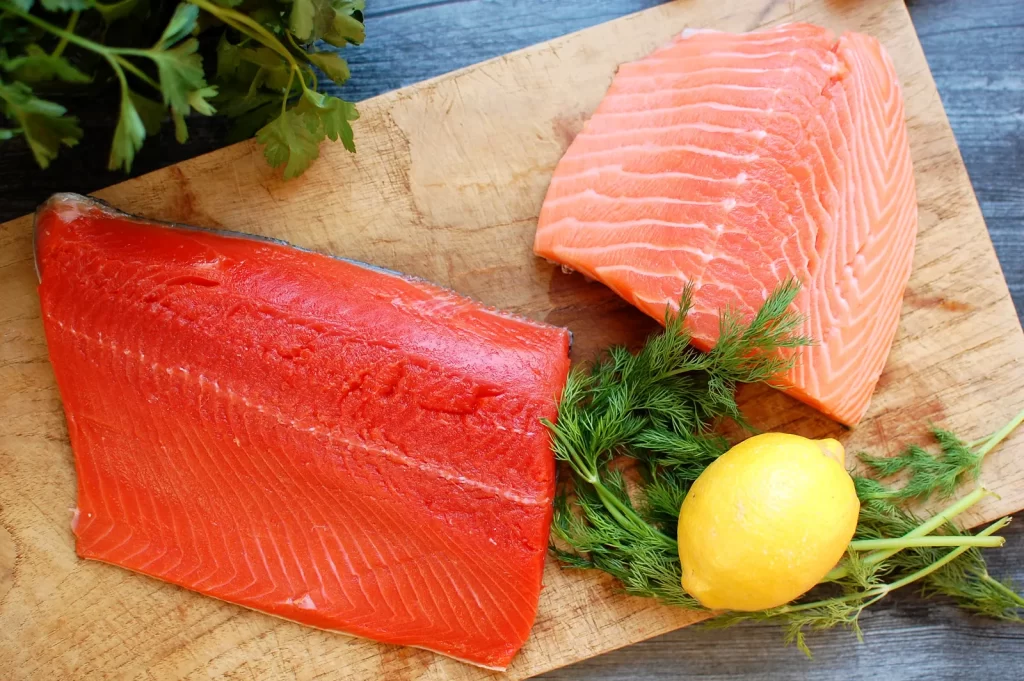Fish sauce and oyster sauce are both popular condiments in Asian cuisine, but they have distinct characteristics and uses. Fish sauce, made primarily from fermented fish and salt, is thin and clear with a strong, salty flavor that adds depth and umami to dishes. It’s widely used in Southeast Asian cuisines, especially in Thai and Vietnamese recipes, as a seasoning or dipping sauce.
On the other hand, oyster sauce, originating from Chinese cuisine, is a thick, dark brown sauce made from oyster extracts, sugar, and soy sauce. It has a sweet and slightly smoky flavor, making it ideal for stir-fries, marinades, and as a glaze for meat and vegetables. While both sauces enhance the flavor of a wide range of dishes, their unique tastes and textures mean they are not typically interchangeable in recipes.
What is Fish Sauce?
Fish sauce is a liquid condiment made from fish that have been coated in salt and fermented for a period of up to two years. It is a staple ingredient in many Southeast Asian cuisines, particularly Thai and Vietnamese dishes. The fish used are typically small, like anchovies, and the fermentation process breaks them down, resulting in a clear, amber-colored liquid.
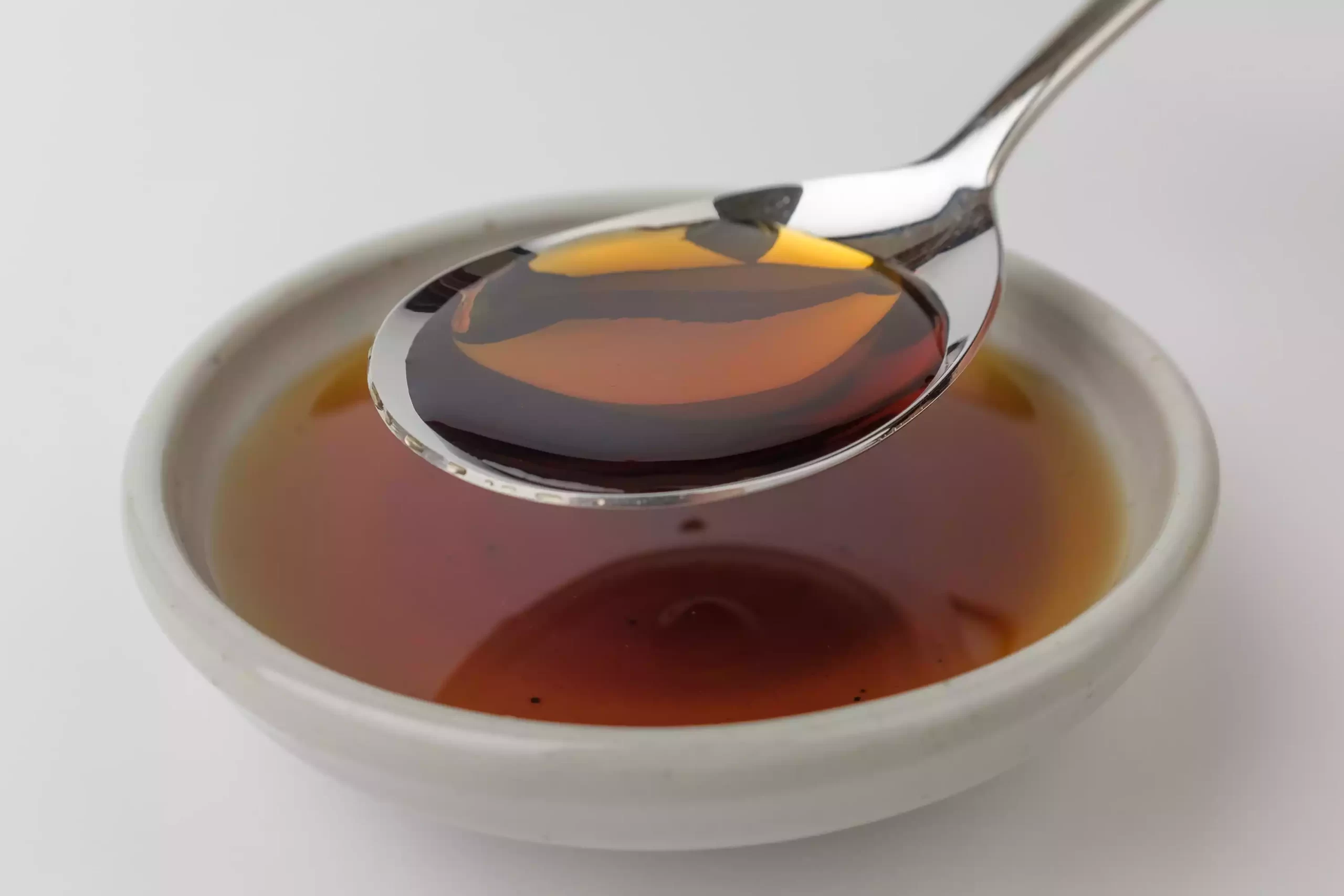
The flavor of fish sauce is intensely salty, with a strong fishy aroma and a complex umami taste. It’s used to add depth and richness to a variety of dishes, including soups, stews, marinades, dipping sauces, and as a seasoning in place of salt. Its unique flavor is often described as an essential element in many Southeast Asian recipes, contributing a distinct savory note that is difficult to replicate with other ingredients.
While fish sauce is an acquired taste for some, its ability to enhance the flavors in a dish makes it a beloved and indispensable ingredient in the culinary traditions where it is used.
What is Oyster Sauce?
Oyster sauce is a thick, dark brown condiment widely used in Chinese cuisine and other Asian cooking styles. It’s made from oyster extracts, which are cooked down until they form a rich, concentrated sauce. To this base, other ingredients like sugar, salt, and sometimes soy sauce or cornstarch (for thickening) are added. The resulting sauce has a unique combination of a sweet, salty, and slightly earthy flavor with a hint of umami.
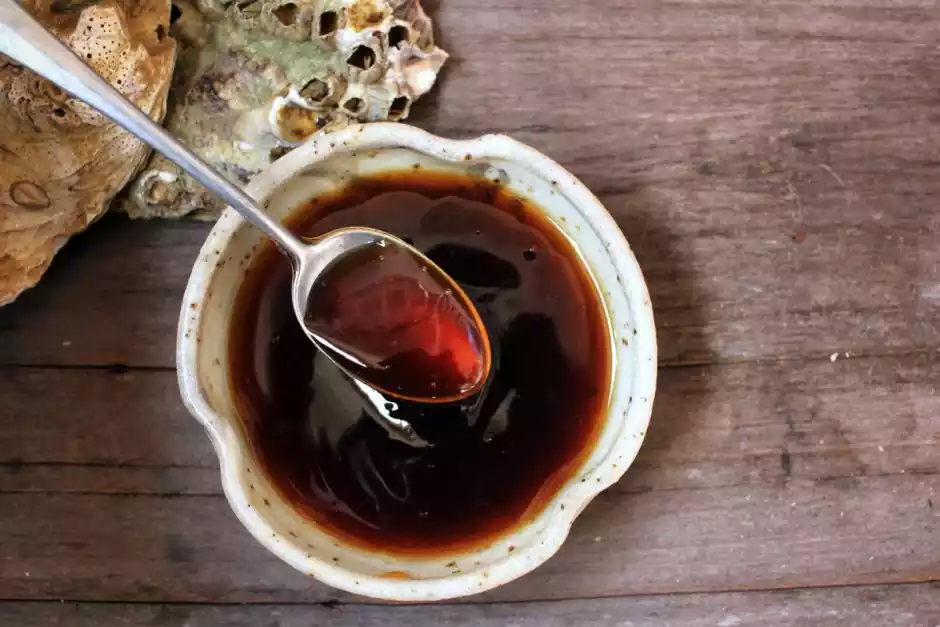
The origins of oyster sauce trace back to the southern Chinese province of Guangdong. It is commonly used in stir-fries, as a marinade, or as a finishing sauce in a variety of dishes such as beef with broccoli, chow mein, and other meat or vegetable dishes. The sauce enhances the flavor of the ingredients without overpowering them.
Oyster sauce is distinct from fish sauce in its taste and consistency. While fish sauce is thin and has a strong, salty flavor, oyster sauce is thicker, darker, and has a more balanced sweetness and saltiness. It’s an essential ingredient in many Asian kitchens due to its ability to add depth and a complex layer of flavor to a wide array of dishes.
Importance of understanding their differences
Understanding the differences between fish sauce and oyster sauce is crucial for several reasons, especially in cooking and culinary appreciation:
- Flavor Profiles: Fish sauce has a strong, salty, and umami flavor, while oyster sauce offers a sweet, savory, and slightly smoky taste. Knowing these distinct flavor profiles helps in choosing the right sauce for the desired taste in a dish.
- Culinary Applications: Each sauce has specific uses in cooking. Fish sauce is often used in small quantities to enhance the overall savoriness of a dish, commonly in Southeast Asian cuisines like Thai and Vietnamese. Oyster sauce, being thicker and sweeter, is frequently used in Chinese cooking for stir-fries, glazes, and as a sauce base. Using one in place of the other can significantly alter the intended flavor of a recipe.
- Cultural Appreciation: Each sauce has its roots in specific Asian cuisines. Understanding their unique characteristics is part of appreciating the culinary traditions and practices of these cultures.
- Dietary Considerations: For individuals with dietary restrictions, such as shellfish allergies or vegetarianism, knowing the ingredients and origins of these sauces is important. For example, oyster sauce is typically not suitable for vegetarians or those allergic to shellfish, whereas fish sauce is not suitable for vegetarians but may be acceptable for pescatarians.
- Recipe Development and Adaptation: When creating or adapting recipes, knowing the characteristics of these sauces can help in achieving the desired flavor balance. It’s also useful for making substitutions – if a recipe calls for one and you only have the other, understanding their differences can guide how to modify the dish appropriately.
A clear understanding of the differences between fish sauce and oyster sauce is essential for successful cooking, especially in dishes where these sauces play a key role. It helps in making informed choices that respect the integrity of traditional recipes while also catering to individual tastes and dietary needs.
Ingredients and Production Process
The ingredients and production processes for fish sauce and oyster sauce are quite distinctive due to their unique origins and flavor profiles. Here’s a detailed look at each:
Fish Sauce
Ingredients:
- Primary Ingredient: Small fish, typically anchovies.
- Secondary Ingredient: Sea salt.
Production Process:
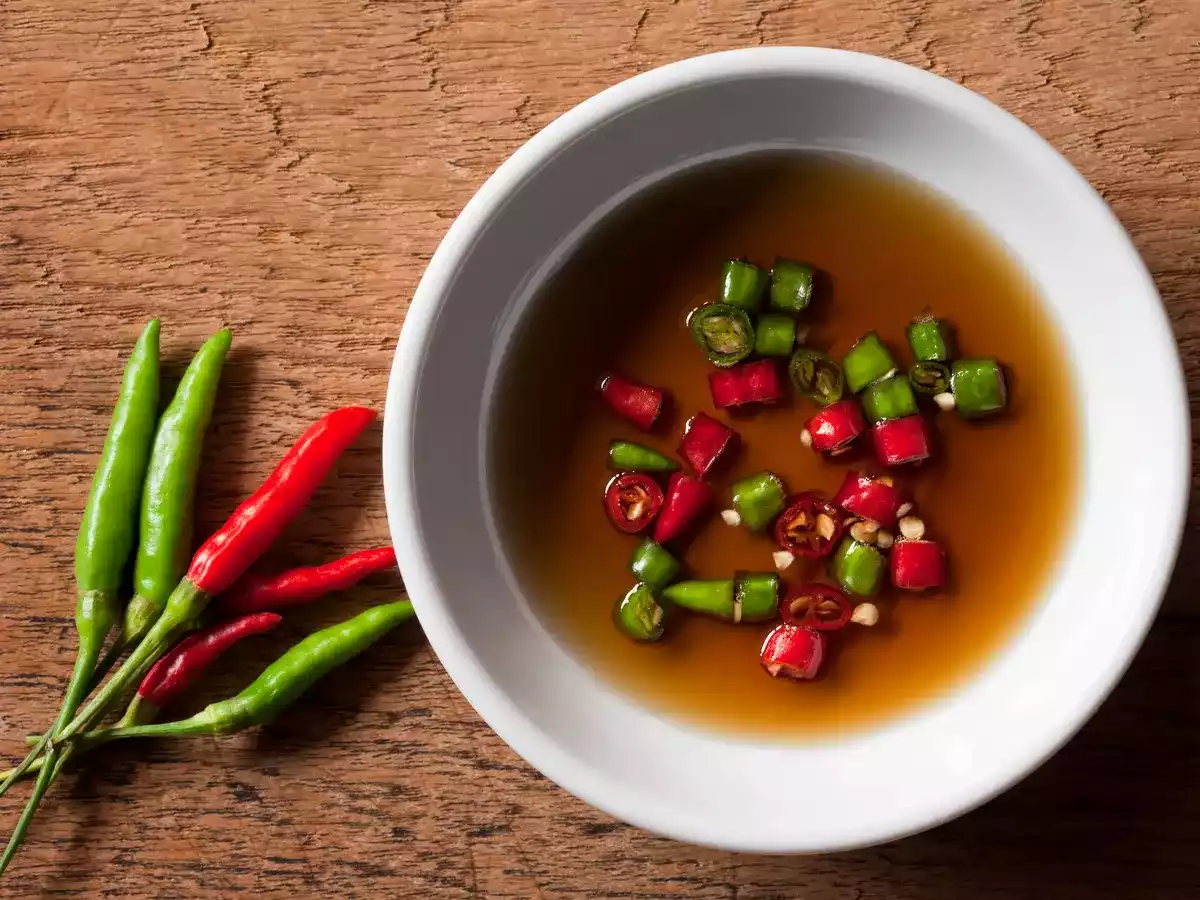
- Preparation: Fresh or dried small fish are cleaned and prepared. They are mixed with sea salt in a ratio that typically ranges around 3:1 (fish to salt).
- Fermentation: The salted fish are placed in large fermentation barrels. The salt acts as a preservative and aids in the fermentation process.
- Aging: The mixture is left to ferment for several months to a few years. During this time, the fish slowly decompose, and their flavors intensify.
- Extraction: After the aging process, the mixture is pressed, and the liquid (fish sauce) is extracted.
- Refining: The extracted liquid is often refined and filtered to remove solid particles.
- Bottling: The final product is bottled and pasteurized for preservation.
Oyster Sauce
Ingredients:
- Primary Ingredient: Oyster extracts or oyster juices.
- Secondary Ingredients: Water, sugar, salt, sometimes soy sauce, and thickening agents like cornstarch.
Production Process:
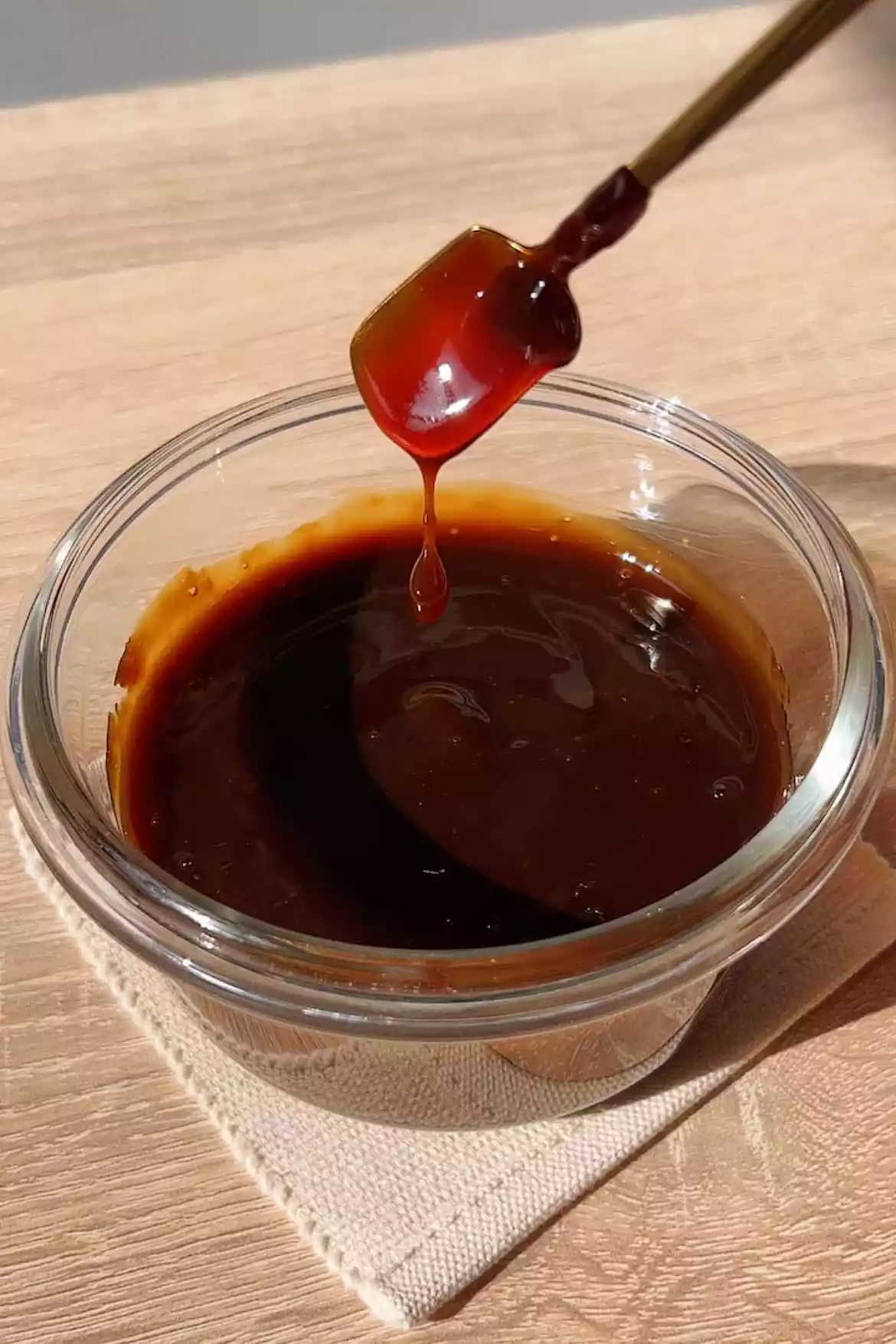
- Cooking Oysters: Oysters are boiled to extract their flavors. The oysters are then removed, leaving behind a flavorful liquid.
- Reduction: The oyster liquid is reduced by simmering it over low heat to concentrate the flavors.
- Seasoning: Ingredients like sugar, salt, and sometimes soy sauce are added to the reduced oyster liquid for flavor.
- Thickening: Cornstarch or another thickening agent is used to achieve the desired consistency.
- Straining and Refining: The sauce is strained to ensure a smooth texture.
- Bottling: The sauce is bottled and pasteurized.
Key Differences
- Base Ingredients: Fish sauce is made from fermented fish, while oyster sauce is made from cooked oyster extracts.
- Flavor Profile: Fish sauce has a strong, salty, umami flavor. Oyster sauce, on the other hand, is sweeter, less salty, and has a slightly smoky and earthy taste.
- Texture: Fish sauce is thin and clear, whereas oyster sauce is thick and dark.
Both sauces are staples in Asian cooking, each lending its distinctive flavor and character to various dishes. Their production processes are time-tested and reflect the culinary traditions of the regions where they originated.
Fish sauce uses

Below are the uses of Fish sauce:
- Seasoning: Fish sauce is commonly used as a seasoning to add a savory, umami flavor to a wide variety of dishes.
- Soups and Broths: It’s a key ingredient in many Asian soups and broths, such as pho and tom yum soup.
- Marinades: Fish sauce is used as a marinade for meats, seafood, and tofu, imparting a rich and salty flavor.
- Stir-Fries: It enhances the taste of stir-fried dishes, providing depth and complexity to vegetables, meats, and noodles.
- Dipping Sauce: It can be mixed with other ingredients like lime juice, sugar, and chili to create a flavorful dipping sauce.
- Salad Dressings: A small amount of fish sauce can elevate the taste of salad dressings, especially those with an Asian flair.
- Curries: Fish sauce is used in many Asian curries to enhance the overall flavor profile.
- Noodle Dishes: It’s added to noodle dishes, such as pad thai and drunken noodles, for its distinctive taste.
- Seasoning Rice: In some Asian cuisines, it’s used to season rice or rice dishes.
- Cocktails: In some creative cocktails, a dash of fish sauce can add a unique savory element.
Oyster sauce uses

Below are the uses of oyster sauce:
- Stir-Fries: Oyster sauce is a staple in stir-fry dishes, providing a rich, savory-sweet flavor to vegetables, meats, and seafood.
- Marinades: It’s used as a marinade for meats and seafood, imparting a savory depth of flavor.
- Sauces and Gravies: Oyster sauce serves as a base for many sauces and gravies, adding complexity to various dishes.
- Glazing: It can be used as a glaze for meats and vegetables, giving them a glossy finish and a delicious taste.
- Noodles and Rice Dishes: Oyster sauce is commonly used in noodle and rice dishes, enhancing the overall umami taste.
- Vegetable Dishes: It complements a wide range of vegetable dishes, adding a savory note without overpowering the vegetables.
- Dipping Sauce: While less common, it can be used as a dipping sauce, either on its own or mixed with other ingredients like soy sauce and sesame oil.
- Seasoning: Oyster sauce can be used as a seasoning to enhance the flavor profile of soups, stews, and casseroles.
Comparison table of Fish Sauce vs Oyster Sauce
Here’s a comparison table highlighting the key differences between Fish Sauce and Oyster Sauce:
| Aspect | Fish Sauce | Oyster Sauce |
| Base Ingredient | Typically made from fermented fish, usually anchovies. | Made from oyster extracts, often with other ingredients like soy sauce. |
| Origin | Widely used in Southeast Asian cuisine, especially in Thailand and Vietnam. | Originated in Chinese cuisine. |
| Flavor | Has a strong, salty taste with a distinct umami flavor. | Sweeter, less salty than fish sauce, with a slightly smoky and earthy taste. |
| Texture | Thin and clear, more liquid-like. | Thicker and darker, with a more syrup-like consistency. |
| Usage | Used as a seasoning or dipping sauce, often added in small quantities to enhance other flavors. | Commonly used in stir-fries, as a marinade, or as a glaze for meats and vegetables. |
| Culinary Role | Adds depth and umami to dishes, used to balance and enhance flavors. | Used to add sweetness and a rich, complex flavor to dishes. |
| Vegetarian-Friendly | Typically not vegetarian, as it is made from fish. | Not usually vegetarian, due to the oyster extracts. (Vegetarian versions are available.) |
| Allergen Considerations | Not suitable for people with fish allergies. | Not suitable for those with shellfish allergies. |
This table provides a clear overview of how fish sauce and oyster sauce differ in terms of their ingredients, origins, flavor profiles, and culinary applications. Understanding these differences is crucial for anyone interested in cooking or appreciating Asian cuisine.
Key similarities between Fish Sauce and Oyster Sauce
Fish sauce and oyster sauce, while distinct in their flavor profiles and culinary uses, do share some key similarities:
-
- Asian Cuisine Staples: Both sauces are essential ingredients in Asian cuisines, particularly in Chinese, Thai, and Vietnamese cooking.
- Umami Flavor: Each sauce imparts a unique umami taste, which is a savory and deep flavor profile highly prized in cooking. Umami is one of the five basic tastes, alongside sweet, sour, bitter, and salty.
- Derived from Seafood: Both are seafood-based sauces. Fish sauce is made from fermented fish, typically anchovies, while oyster sauce is made from oyster extracts.
- Salty Flavor Base: They both have a salty flavor foundation, which is a key characteristic in their use as flavor enhancers in various dishes.
- Condiment and Ingredient: Fish sauce and oyster sauce are used both as condiments and as integral ingredients in recipes. They are added to dishes during cooking to enhance and balance other flavors.
- Long Shelf Life: Due to their high salt content and the nature of their production, both sauces have a long shelf life and can be stored for a considerable time when kept in appropriate conditions (usually in a cool, dark place or refrigerated after opening).
- Cultural Significance: Each sauce has a rich history and cultural significance in the cuisines they are associated with, reflecting traditional methods of preservation and flavor enhancement.
Understanding these similarities can help in appreciating the role these sauces play in culinary traditions, despite their distinct tastes and specific uses in cooking.
Healthy benefits of Fish sauce and Oyster sauce
Fish sauce and oyster sauce are flavorful condiments commonly used in Asian cuisine. While they are not typically consumed in large quantities, they do offer some potential health benefits:
Fish Sauce:
- Umami Flavor: Fish sauce is rich in umami, the fifth basic taste alongside sweet, sour, bitter, and salty. Umami adds depth and complexity to dishes, making them more satisfying.
- Source of Protein: Fish sauce contains small amounts of protein due to the fish used in its production. While not a significant source of protein, it contributes to the overall nutrient content.
- Minerals: Fish sauce contains minerals like calcium and phosphorus, which are essential for bone health.
- Antioxidants: Some varieties of fish sauce may contain antioxidants due to the fermentation process. These antioxidants can help protect cells from damage caused by free radicals.
Oyster Sauce:
- Umami Flavor: Oyster sauce is known for its strong umami flavor, which enhances the taste of dishes without the need for excessive salt or sugar.
- Low in Calories: Oyster sauce is relatively low in calories, making it a good choice for adding flavor to dishes without a significant increase in caloric intake.
- Iron Content: Oyster sauce may contain small amounts of iron, which is important for transporting oxygen in the blood and preventing anemia.
- Source of Certain Amino Acids: Oyster sauce contains some essential amino acids that are important for protein synthesis and overall health.
Best Brands of Fish Sauce and Oyster Sauce

Here are some of the top brands for both fish sauce and oyster sauce, known for their quality and flavor:
Best Fish Sauce Brands
- Red Boat: Highly regarded for its purity and quality, Red Boat fish sauce is made with only anchovies and sea salt, and is known for its robust flavor.
- Three Crabs: A popular brand among chefs and home cooks, Three Crabs is known for its balanced and slightly sweet flavor.
- Golden Boy: This brand is praised for its authentic taste and is a favorite in many Thai kitchens.
- Squid Brand: Offering a strong and salty flavor, Squid Brand is a good choice for those looking for a more intense fish sauce.
- Megachef (or Megachef Premium): Known for its premium quality, Megachef is praised for its balanced flavor, suitable for a variety of dishes.
- Tiparos: A staple in Thai cooking, Tiparos is known for its lighter and milder flavor, making it a good choice for those new to fish sauce.
- Flying Lion: This brand is favored by many chefs for its deep umami flavor and consistency.
Best Oyster Sauce Brands
- Lee Kum Kee: One of the most well-known and widely available brands, Lee Kum Kee offers a range of oyster sauces, including their Premium Oyster Sauce which is particularly popular for its rich flavor.
- Panda Brand (by Lee Kum Kee): Also under the Lee Kum Kee umbrella, Panda Brand is another favorite, known for its slightly different flavor profile.
- Kikkoman: While primarily famous for its soy sauce, Kikkoman’s oyster sauce is of high quality and well-balanced in flavor.
- Dragonfly: This brand is often used in Southeast Asian cooking and is known for its rich flavor and good consistency.
- Maekrua: Popular in Thailand, Maekrua oyster sauce is noted for its authentic flavor, commonly used in Thai dishes.
- Wok Mei: Offers a gluten-free oyster sauce, which is great for those with gluten sensitivities or celiac disease.
- Ayam: Known for making a variety of Asian sauces, Ayam’s oyster sauce is praised for its rich umami flavor.
When choosing a fish sauce or oyster sauce, it’s important to consider the specific needs of your recipe and personal taste preferences. Some dishes might benefit from a stronger fish sauce, while others may require a subtler, sweeter oyster sauce. Additionally, for those with dietary restrictions, always check the label for ingredients and allergen information.
Final Opinion
Fish sauce and Oyster sauces are distinct, but vital condiments that are used that are essential to Asian food. Fish sauce, made of salt and fermented seafood gives a distinct umami taste that is salty and can be used to season soups, marinades, and many more. Oyster sauce, made of oyster extracts offers sweet-savoury notes and enhances stir-fries and sauces as well as glazes.
Both sauces bring unique flavors to food items, highlighting their culinary traditions that are rich as well as adding depth and sophistication to a variety of recipes. Knowing their distinct characteristics and uses allows cooks to discover the rich array of Asian flavors in their food creations.

